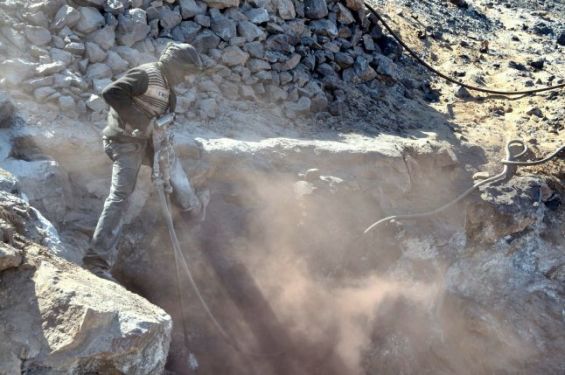A new study has revealed that silicosis, a fatal disease that affects miners in particular, can be prevented. Conducted by a group of researchers from the French National Center for Scientific Research (CNRS), the University of Orléans, biotechnology company Antimmune and the Turkish Clinicians from the Ataturk University, the study was able to identify a mechanism of lung inflammation induced by silica exposure, which leads to silicosis.
Entitled «Sting-dependent sensing of self-DNA drives silica-induced lung inflammation», the project reveals that the inflammation, leading to the incurable disease, can be averted. Published December the 6th on Nature Communication, the study suggests that workers exposed to silica microparticles have their cells stress and die.
This can lead to chronical inflammation and fibrosis. Starting from this conclusion, researchers studied the «mechanism underlying silica-induced lung inflammation».
They found out that «DNA released into the airways upon cell death activates a signaling cascade known as the STING pathway». According to them «this pathway triggers lung inflammation that ultimately may develop into silicosis. They also demonstrated that treatment with DNase I, an enzyme that degrades the DNA released into the airways, prevents silica-induced lung inflammation».
To put it in other words, silicosis can be prevented by reducing the creation of the Sting. This can be done through «extracellular DNA degradation», pointed out CNRS in a press release made public earlier this month.
Miners in the city of Jerada
According to researchers who worked on the study, silicosis can affect workers, operating in the textile and fashion industry. Most particularly, those who work in denim sandblasting, a process used to give jeans a fashionable and distressed look.
This study is also good news for Moroccan nationals affected by the disease, especially those who worked for Charbonnage du Maroc, a company that used to extract coal in the city of Jerada.
Although the company was shot in 1998, its laid off workers were left with the deadly disease. In a previous article, Yabiladi spoke to two families whose members suffered from the deadly disease.
Rachid Essaltani, a resident of Jerada and a member of a local collective of coal workers and sons, told Yabiladi that «Jerada has been suffering from poverty, vulnerability and isolation since the end of Charbonnage du Maroc in 1998».
Essaltani, whose father died after suffering for years from the coal workers’ pneumoconiosis, stressed that workers «around their 50s -sometimes 40s- become reliant on artificial devices to be able to breathe», he said adding that they «suffer the most during summer and winter times, just like these days».
Complaining about the consequences of the mines’ closure, Rachid Essaltani insisted that «while these former miners are already struggling with their irreversible sickness they have to cope with their financial situation and the little money they live with».





 chargement...
chargement...












